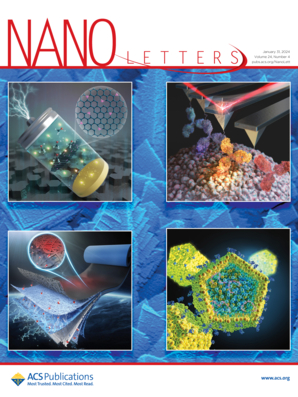Photonic Disclination Nanocavities with Versatile Rotational Symmetries.
IF 9.6
1区 材料科学
Q1 CHEMISTRY, MULTIDISCIPLINARY
引用次数: 0
Abstract
Disclinations, as real-space topological defects, have been extensively studied across condensed matter and classical wave systems. However, their formation is typically restricted by atomic interaction forces or specific lattice symmetries, severely limiting the tunability. Here, we engineer photonic disclination nanocavities with versatile rotational symmetries through a symmetry-unconstrained Volterra process, surpassing natural system limitations. Through systematic analysis of structural geometry, intercell coupling, and eigenmodes, we reveal that these synthetic disclinations host tightly confined optical states within the photonic bandgap, originating from distinct physical mechanisms. We demonstrate a semiconductor nanocavity laser exhibiting stable single-mode emission across the entire dynamic range, leveraging a high-Q, in-gap disclination state with a near-diffraction-limited mode volume. This work proves that disclination states with diverse discrete symmetries can be rationally designed to achieve exceptional optical confinement. These results open a pathway to design nanophotonic devices with tailored functionalities, positioning disclination defects as a versatile platform for next-generation photonic applications.具有多用途旋转对称性的光子偏斜纳米腔。
Disclinations作为实空间拓扑缺陷,在凝聚态和经典波系统中得到了广泛的研究。然而,它们的形成通常受到原子相互作用力或特定晶格对称性的限制,严重限制了可调性。在这里,我们通过不受对称约束的Volterra工艺设计了具有多用途旋转对称性的光子偏旋纳米腔,超越了自然系统的限制。通过对结构几何、胞间耦合和本征模式的系统分析,我们揭示了这些合成的异位在光子带隙内具有紧密受限的光学态,它们起源于不同的物理机制。我们展示了一种半导体纳米腔激光器,在整个动态范围内表现出稳定的单模发射,利用高q隙内衍射状态和接近衍射限制的模式体积。本工作证明了可以合理地设计具有不同离散对称性的衍射态以实现特殊的光约束。这些结果为设计具有定制功能的纳米光子器件开辟了一条途径,将偏误缺陷定位为下一代光子应用的通用平台。
本文章由计算机程序翻译,如有差异,请以英文原文为准。
求助全文
约1分钟内获得全文
求助全文
来源期刊

Nano Letters
工程技术-材料科学:综合
CiteScore
16.80
自引率
2.80%
发文量
1182
审稿时长
1.4 months
期刊介绍:
Nano Letters serves as a dynamic platform for promptly disseminating original results in fundamental, applied, and emerging research across all facets of nanoscience and nanotechnology. A pivotal criterion for inclusion within Nano Letters is the convergence of at least two different areas or disciplines, ensuring a rich interdisciplinary scope. The journal is dedicated to fostering exploration in diverse areas, including:
- Experimental and theoretical findings on physical, chemical, and biological phenomena at the nanoscale
- Synthesis, characterization, and processing of organic, inorganic, polymer, and hybrid nanomaterials through physical, chemical, and biological methodologies
- Modeling and simulation of synthetic, assembly, and interaction processes
- Realization of integrated nanostructures and nano-engineered devices exhibiting advanced performance
- Applications of nanoscale materials in living and environmental systems
Nano Letters is committed to advancing and showcasing groundbreaking research that intersects various domains, fostering innovation and collaboration in the ever-evolving field of nanoscience and nanotechnology.
 求助内容:
求助内容: 应助结果提醒方式:
应助结果提醒方式:


